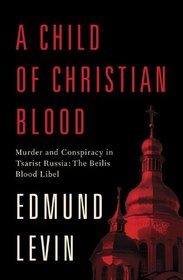Search -
A Child of Christian Blood: Murder and Conspiracy in Tsarist Russia: The Beilis Blood Libel
A Child of Christian Blood Murder and Conspiracy in Tsarist Russia The Beilis Blood Libel
Author:
A Jewish factory worker is falsely accused of ritually murdering a Christian boy in Russia in 1911, and his trial becomes an international cause c�l�bre. — � — On March 20, 1911, thirteen-year-old Andrei Yushchinsky was found stabbed to death in a cave on the outskirts of Kiev. Four months later, Russian police arrested Mendel Beilis, a thirty-sev... more »
Author:
A Jewish factory worker is falsely accused of ritually murdering a Christian boy in Russia in 1911, and his trial becomes an international cause c�l�bre. — � — On March 20, 1911, thirteen-year-old Andrei Yushchinsky was found stabbed to death in a cave on the outskirts of Kiev. Four months later, Russian police arrested Mendel Beilis, a thirty-sev... more »
ISBN-13: 9780805242997
ISBN-10: 0805242996
Publication Date: 2/25/2014
Pages: 400
Rating: ?
ISBN-10: 0805242996
Publication Date: 2/25/2014
Pages: 400
Rating: ?
0 stars, based on 0 rating
Genres:
- Biographies & Memoirs >> True Crime >> Murder & Mayhem
- History >> Russia
- History >> Jewish
- Categories >> Kindle eBooks >> Religion & Spirituality >> Christianity
- History >> Modern (16th-21st Centuries) >> 20th Century
- Law >> Legal Theory & Systems >> Legal History
- Nonfiction >> Social Sciences >> Discrimination & Racism




